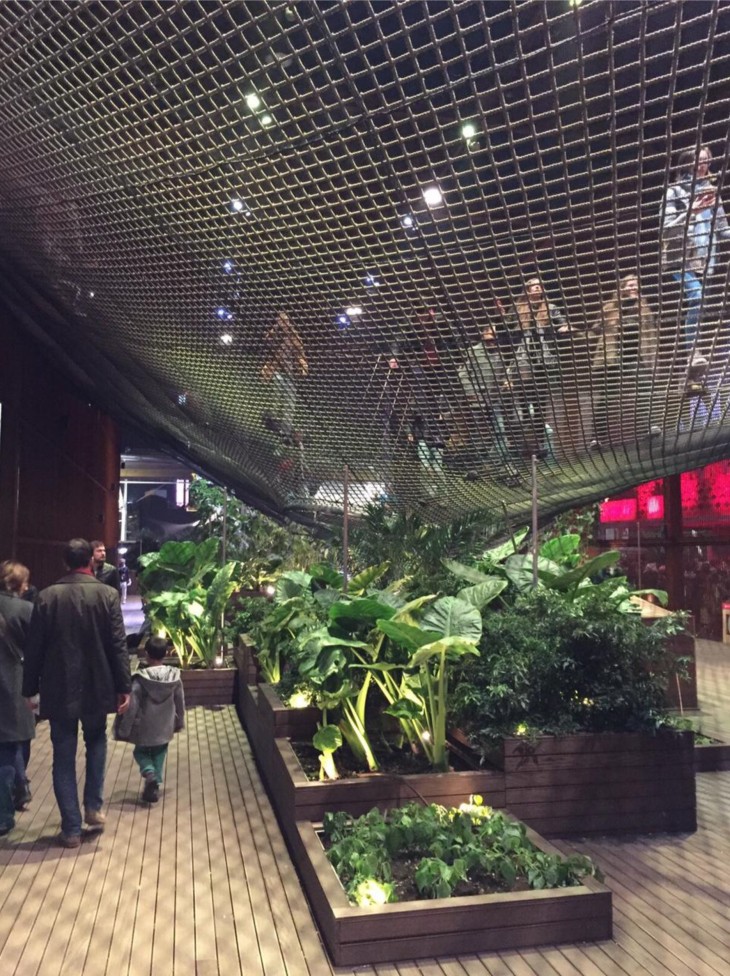In the text the Architecture of Atmosphere, Wigley tries to dissect the topic of atmosphere in architecture, how it is perceived, if it can be perceived as well as some historical architects view on the topic. He creates a discourse around the fact that many architects claim to master the creation of certain atmospheres, while atmosphere is something that cannot be addressed, controlled or even defined properly.
F.L. Wright saw himself as an architect of atmosphere, designing atmospheres not buildings. This can be seen in his drawings where natural elements such as the horizon are represented in a way as to suggest that they are subordinate to the building and controllable by the architect himself. Le Corbusier did not share the same concern for atmosphere in architecture, but ironically “the very rejection of atmosphere constructs a particular atmosphere”. Meaning that despite his attempts to marginalize atmosphere, he unwillingly created very distinct atmospheres. His absence of décor became the preferred décor of the time. The situationist movement, spearheaded by Guy Debord and Constant Nieuwenhuys proposed to redefine architecture as pure atmospherics, arguing that architecture in essence is experienced as the passing from one atmosphere to another. They also proposed that the border between one atmosphere and another should be clearly marked and celebrated as well as using décor as their main architectural instrument. They further argued that, “The ‘Situationist architect’ has to ‘exploit the existing decors’, then develop whole new systems of decor and finally explore new ways of interacting with that décor”. Debord later rejected his own theories along with the very idea of the situationist architect by acknowledging that society “molds its own décor” and that “the world is to be constructed by its users rather than by an architect”, picturing a world of uncontrolled atmospheres where the architect himself will be displaced. According to Wigley, architects deal with this existential threat by always pretending to be in control, be it Wright’s intents to construct atmospheres or Le Corbusier’s attempted removal of atmosphere. As opposed to the situationists, who celebrated the passing from one atmosphere to another, Johnston and Marklee, in their View House try to create one continuous atmosphere experienced through a sequence where the borders between atmospheres are blurred. The contradiction to the situationist philosophy becomes even clearer by the fact that the architects use little or no décor in this house. Fujimoto, as several of his Japanese colleagues is concern with the gradient transition from inside to outside. His attempt to construct atmospheres can be seen clearly in his House N, where the house is composed as 3 separate “screens”, forming a gradient between the inside and outside. The distinct spaces between the screens are defined by a different type of atmosphere, and the border between each one is clearly marked by the visual impact of the concrete screens. Wigley further argues that “Since the physical context has its own ambience, the building is a kind of device for producing a particular atmosphere within another one.” This view is clearly seen in the Palmyra House by Mumbai Studio. The project clearly recognizes the dense forest environment as a distinct and rich atmosphere in itself and cleverly adapts to it rather than try to control it. Atmosphere is essential to architecture, defining it, yet it is according to Wigley something that cannot be addressed, controlled or taught. This paradox is essential in understanding the role of the architect and something that each architect should keep in mind throughout his or her career.

Brazilian Pavilion at Expo Milano 2015 by Studio Arthur Casas, Atelier Marko Brajovic
A very distinct atmosphere created in an artificial environment. By minimal use of architectural elements, the pavilion itself successfully imitates the atmosphere of a rainforest with the help of human interaction.